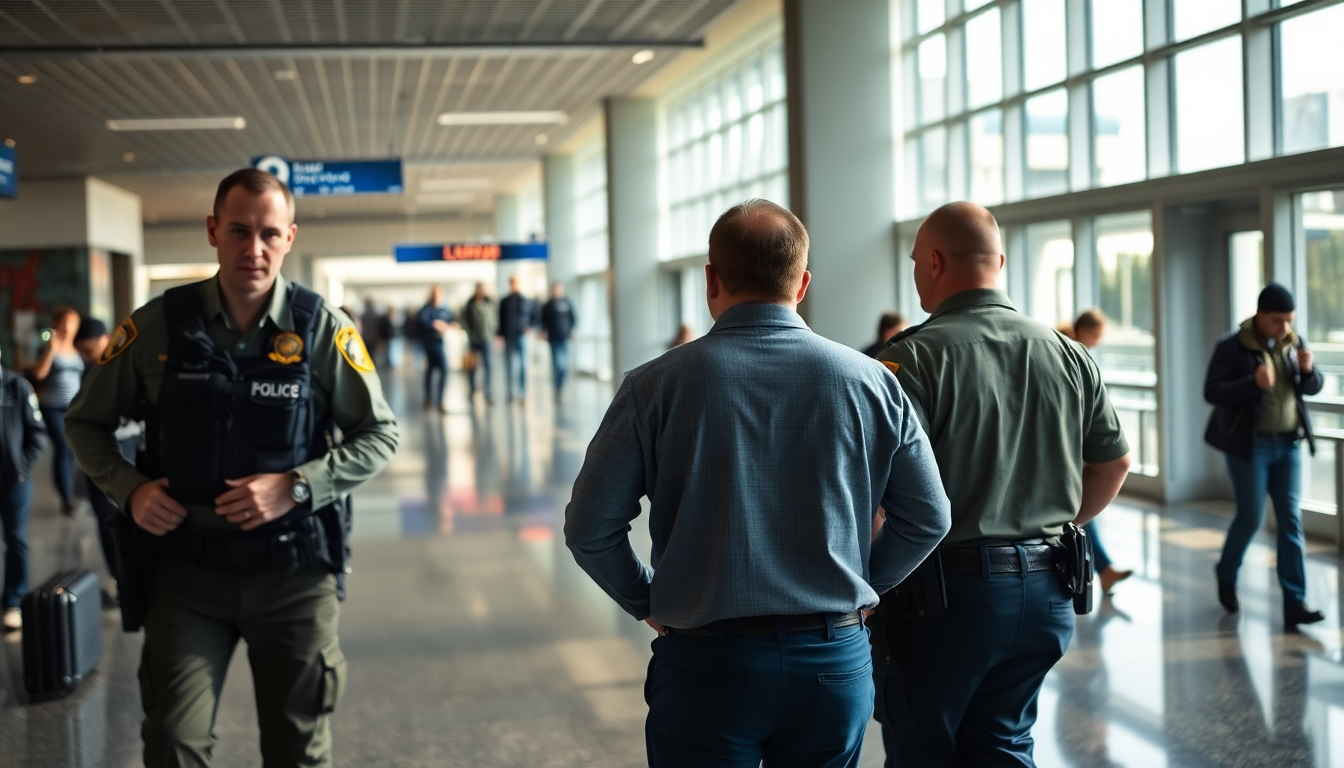Table of Contents
The recent recapture of fugitive Sedrick T. Stevenson has captured headlines for more than just the dramatic circumstances of his escape. His surprising demeanor upon returning to custody raises intriguing questions about justice and accountability. Take, for instance, the incident at Seattle-Tacoma International Airport, which highlights just how complex law enforcement coordination can be and the lengths to which authorities will go to ensure justice is served. As Stevenson was escorted back to Kentucky, his broad smile stood in stark contrast to the seriousness of his situation. What does this say about the nature of justice in today’s world?
The Escape and Recapture Timeline
On May 4, Sedrick T. Stevenson, wanted on multiple warrants out of Bowling Green, Kentucky, executed a calculated escape from a contracted agent while at the airport. This was no mere oversight; he cleverly boarded a light rail train and effectively vanished for over a month. Surveillance footage confirmed his escape, revealing him still in shackles as he made his way to freedom. It’s a reminder: in the world of crime, the unexpected can always happen.
After his escape, a coordinated effort involving the U.S. Marshals, Seattle-area agencies, and local law enforcement sprang into action. These teams worked tirelessly to track down Stevenson, demonstrating an unwavering commitment to bringing him back into custody. His eventual arrest in a Seattle neighborhood didn’t just end his run; it also led to the apprehension of an accomplice. This incident underscores the collaborative efforts of various law enforcement agencies in pursuing justice.
The Warren County Sheriff’s Office kept the community updated, detailing how they ensured Stevenson’s secure return to Kentucky. Their meticulous planning involved coordination with several law enforcement entities, including the Port of Seattle Police, Air Marshals, and TSA. This highlights the multi-faceted nature of police work in high-stakes situations. The sheriff’s office expressed gratitude to everyone involved, emphasizing that community safety remains their top priority. Isn’t it reassuring to see such dedication?
What Happened During the Transport?
Stevenson’s return to custody was no ordinary affair. Law enforcement took serious precautions, including securing him in a wheelchair and seating him in a window seat on the plane. Such measures illustrate just how seriously authorities treat escapes, especially when the fugitive has a history of violent crimes. Stevenson was being extradited back to Kentucky to face serious charges, including possession of a firearm by a convicted felon and third-degree assault. The stakes were high, and everyone knew it.
Interestingly, as deputies transported him back, they shared some lighter moments, humorously noting the lengthy journey it took to retrieve him. Two direct flights and substantial time zone adjustments made for a long day. This contrast of humor against the backdrop of a serious criminal case serves to humanize the law enforcement officers involved while also shedding light on the absurdity of the situation. Isn’t it fascinating how humor can emerge even in tense circumstances?
The U.S. Marshals Service delivered a strong message through this incident: justice has a remarkable way of catching up with those who try to evade it. US Marshal Donrien Stephens emphasized the dedication and resilience of the deputies and task force officers who worked diligently to ensure Stevenson was brought back into custody. It’s a reassuring reminder for the community that a dangerous fugitive is no longer on the loose.
Community Impact and Future Implications
The resolution of this case brings significant implications for community safety. With Stevenson back in custody, many residents can breathe a sigh of relief, knowing that a potential threat has been neutralized. The swift actions of law enforcement not only prevented further harm but also reinforced the importance of collaboration between different agencies in maintaining public safety. Don’t we all want to feel safe in our communities?
As authorities continue tackling the challenges posed by fugitives on the run, the lessons learned from this case could shape future protocols and strategies. Trust between the community and law enforcement is paramount, and how incidents like these are handled can significantly strengthen that bond. By sharing the details of their coordinated efforts, law enforcement can foster transparency and bolster public confidence in their ability to manage high-risk situations.
In conclusion, the saga of Sedrick T. Stevenson serves as a compelling reminder of the complexities involved in law enforcement. While his escape may have posed a significant challenge, the eventual recapture reflects the dedication and resilience of those committed to ensuring justice prevails. Moving forward, the collective efforts of law enforcement will be vital in addressing crime and ensuring safety for all. How can we support these efforts as engaged citizens?


